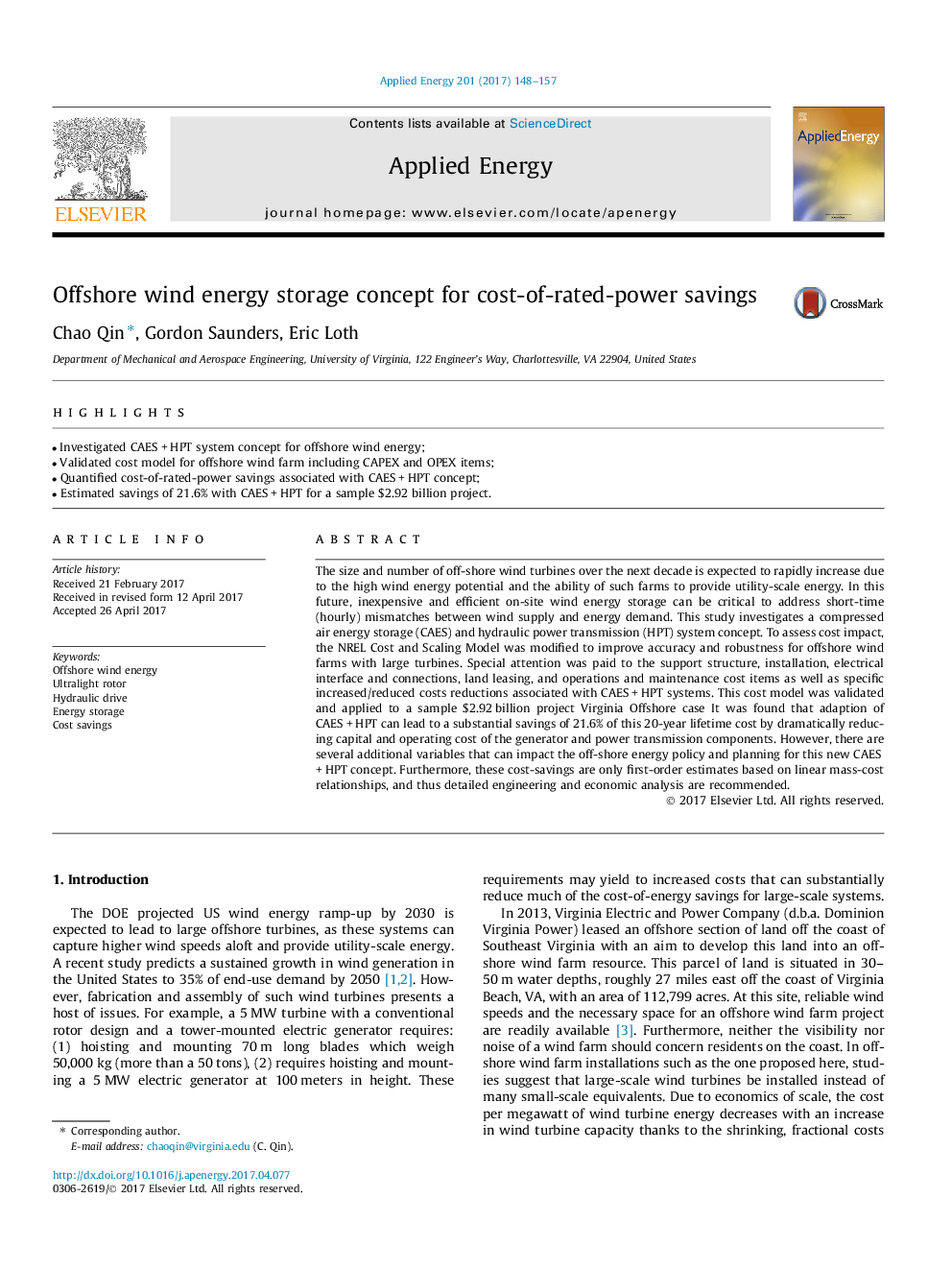| Article ID | Journal | Published Year | Pages | File Type |
|---|---|---|---|---|
| 4916009 | Applied Energy | 2017 | 10 Pages |
Abstract
The size and number of off-shore wind turbines over the next decade is expected to rapidly increase due to the high wind energy potential and the ability of such farms to provide utility-scale energy. In this future, inexpensive and efficient on-site wind energy storage can be critical to address short-time (hourly) mismatches between wind supply and energy demand. This study investigates a compressed air energy storage (CAES) and hydraulic power transmission (HPT) system concept. To assess cost impact, the NREL Cost and Scaling Model was modified to improve accuracy and robustness for offshore wind farms with large turbines. Special attention was paid to the support structure, installation, electrical interface and connections, land leasing, and operations and maintenance cost items as well as specific increased/reduced costs reductions associated with CAESÂ +Â HPT systems. This cost model was validated and applied to a sample $2.92Â billion project Virginia Offshore case It was found that adaption of CAESÂ +Â HPT can lead to a substantial savings of 21.6% of this 20-year lifetime cost by dramatically reducing capital and operating cost of the generator and power transmission components. However, there are several additional variables that can impact the off-shore energy policy and planning for this new CAESÂ +Â HPT concept. Furthermore, these cost-savings are only first-order estimates based on linear mass-cost relationships, and thus detailed engineering and economic analysis are recommended.
Related Topics
Physical Sciences and Engineering
Energy
Energy Engineering and Power Technology
Authors
Chao Qin, Gordon Saunders, Eric Loth,
